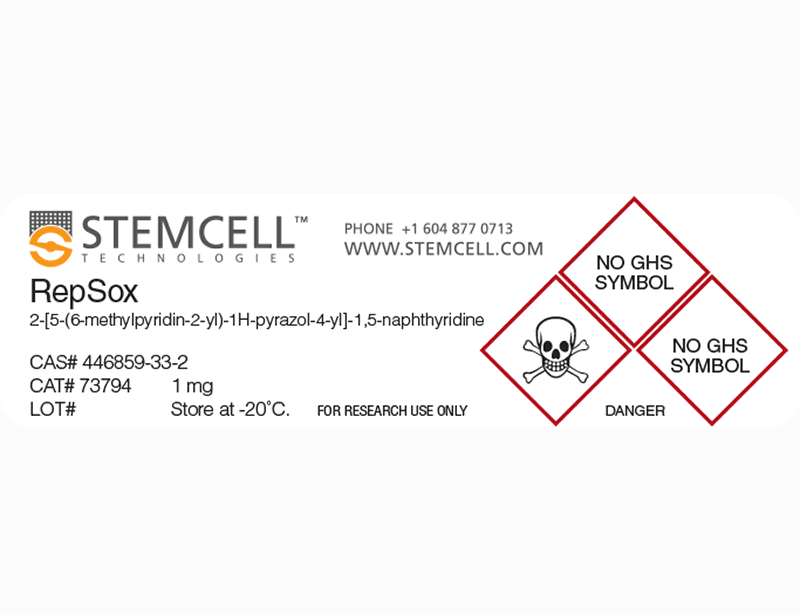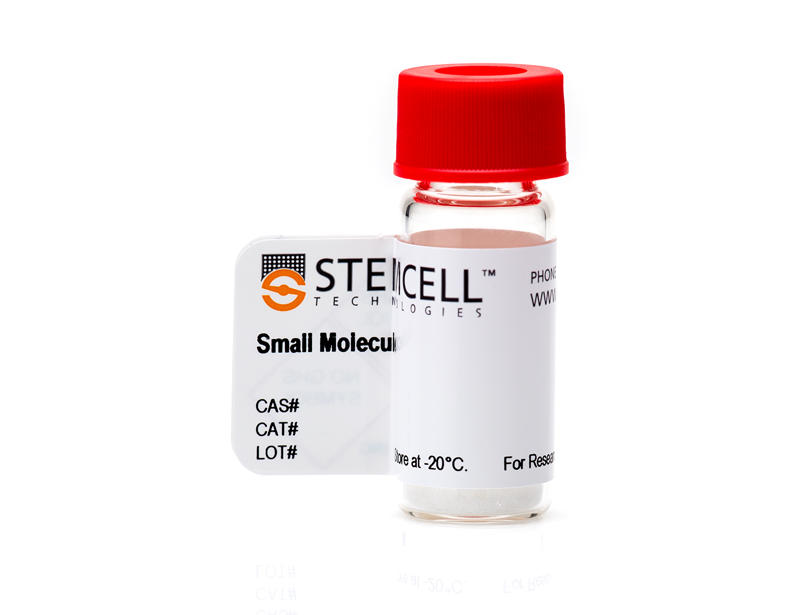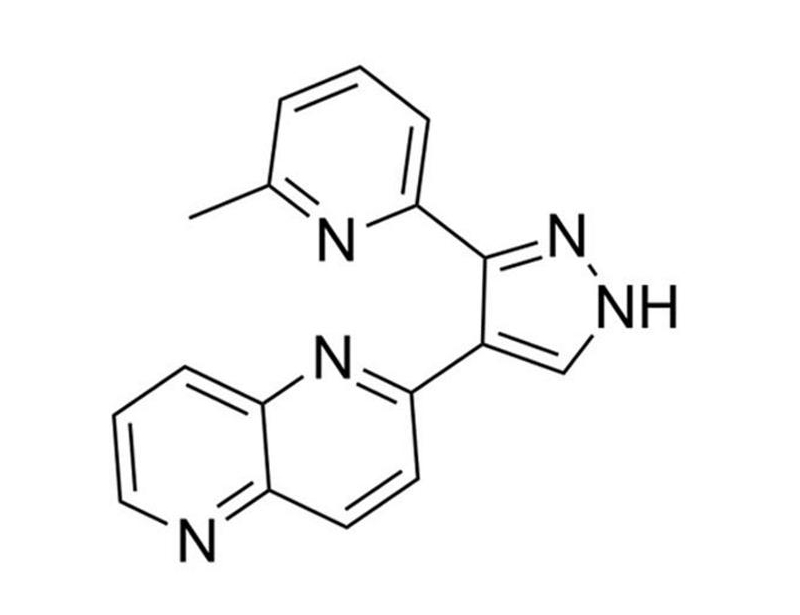概要
RepSox is a cell-permeable, selective inhibitor of the TGF-β type 1 receptor (TGFβRI) ALK5 (IC₅₀ = 4, 18, and 23 nM for ALK5 autophosphorylation, TGF-β cellular assay, and ALK5 binding in HepG2 cells, respectively; Gellibert et al.). This inhibitor demonstrates less potent activity (IC₅₀ > 16 µM) against 9 related kinases, including p38 MAPK and GSK3 (Gellibert et al.).
REPROGRAMMING
· Enhances reprogramming of mouse embryonic fibroblasts (MEFs) that have been transduced with OCT4, KLF4, and c-MYC (Ichida et al.; Subramanyam et al.).
· Direct lineage reprogramming of fibroblasts to mature neurons, in combination with CHIR99021, Valproic Acid, Forskolin, SP600125, Gö6983 and Y-27632 (Hu et al.).
DIFFERENTIATION
· Alone or in combination with Forskolin, Dexamethasone, and Nicotinamide, induces differentiation of human pancreatic progenitor cells into insulin-producing cells (Kunisada et al.; Rezania et al.).
REPROGRAMMING
· Enhances reprogramming of mouse embryonic fibroblasts (MEFs) that have been transduced with OCT4, KLF4, and c-MYC (Ichida et al.; Subramanyam et al.).
· Direct lineage reprogramming of fibroblasts to mature neurons, in combination with CHIR99021, Valproic Acid, Forskolin, SP600125, Gö6983 and Y-27632 (Hu et al.).
DIFFERENTIATION
· Alone or in combination with Forskolin, Dexamethasone, and Nicotinamide, induces differentiation of human pancreatic progenitor cells into insulin-producing cells (Kunisada et al.; Rezania et al.).
技术资料
| Document Type | 产品名称 | Catalog # | Lot # | 语言 |
|---|---|---|---|---|
| Product Information Sheet | RepSox | 73792, 73794 | All | English |
| Safety Data Sheet | RepSox | 73792, 73794 | All | English |
数据及文献
Publications (3)
Cell stem cell 2015 AUG
Direct Conversion of Normal and Alzheimer's Disease Human Fibroblasts into Neuronal Cells by Small Molecules.
Abstract
Abstract
Neuronal conversion from human fibroblasts can be induced by lineage-specific transcription factors; however, the introduction of ectopic genes limits the therapeutic applications of such induced neurons (iNs). Here, we report that human fibroblasts can be directly converted into neuronal cells by a chemical cocktail of seven small molecules, bypassing a neural progenitor stage. These human chemical-induced neuronal cells (hciNs) resembled hiPSC-derived neurons and human iNs (hiNs) with respect to morphology, gene expression profiles, and electrophysiological properties. This approach was further applied to generate hciNs from familial Alzheimer's disease patients. Taken together, our transgene-free and chemical-only approach for direct reprogramming of human fibroblasts into neurons provides an alternative strategy for modeling neurological diseases and for regenerative medicine.
Cell stem cell 2009 NOV
A small-molecule inhibitor of tgf-Beta signaling replaces sox2 in reprogramming by inducing nanog.
Abstract
Abstract
The combined activity of three transcription factors can reprogram adult cells into induced pluripotent stem cells (iPSCs). However, the transgenic methods used for delivering reprogramming factors have raised concerns regarding the future utility of the resulting stem cells. These uncertainties could be overcome if each transgenic factor were replaced with a small molecule that either directly activated its expression from the somatic genome or in some way compensated for its activity. To this end, we have used high-content chemical screening to identify small molecules that can replace Sox2 in reprogramming. We show that one of these molecules functions in reprogramming by inhibiting Tgf-beta signaling in a stable and trapped intermediate cell type that forms during the process. We find that this inhibition promotes the completion of reprogramming through induction of the transcription factor Nanog.
Journal of medicinal chemistry 2004 AUG
Identification of 1,5-naphthyridine derivatives as a novel series of potent and selective TGF-beta type I receptor inhibitors.
Abstract
Abstract
Optimization of the screening hit 1 led to the identification of novel 1,5-naphthyridine aminothiazole and pyrazole derivatives, which are potent and selective inhibitors of the transforming growth factor-beta type I receptor, ALK5. Compounds 15 and 19, which inhibited ALK5 autophosphorylation with IC50 = 6 and 4 nM, respectively, showed potent activities in both binding and cellular assays and exhibited selectivity over p38 mitogen-activated protein kinase. The X-ray crystal structure of 19 in complex with human ALK5 is described, confirming the binding mode proposed from docking studies.

 网站首页
网站首页





